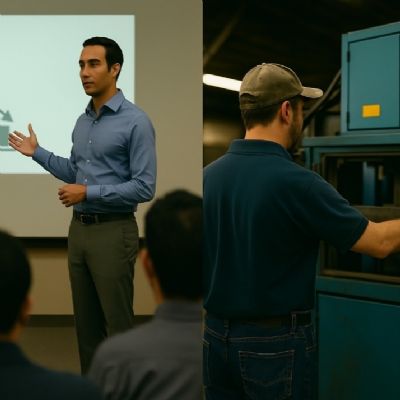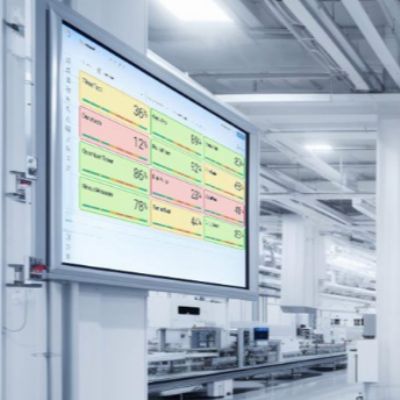The Challenge of Part-Out Sensing, Part 2
October 1, 2008Comments
Parts exiting a die become miniature airplane wings—exhibiting lift and rotation as they freely move through the air and into the customer’s box. The parts may have many holes. Imagine an out-of-control airplane wing that has broken off an airplane in midflight—the wing is full of holes, spinning, turning, flipping, tipping, somersaulting and otherwise in motion. You get the picture. You have to deal with this every single day as a sensor applications specialist.
There is no magic in part-out sensing, only well-reasoned science. One needs to keep a handful of challenges in mind as the exiting parts are carefully analyzed. First and foremost is the trajectory or flight path of the part. As mentioned in last month’s column, a careful set of visual experiments must be conducted on the shop floor to ensure that the proper zone of coverage for the sensor(s) is determined. Whether doing it with one’s eyes or through the aid of a strobe light or high-speed camera, the crucial first step toward successful part-out detection is a thorough understanding of the motion of the part as it exits the tooling.
But here is the rub. The part usually has one or more holes, making it look like a flying piece of Swiss cheese. Actually, there are some parts that seem to have more holes than surface area with minute segments of sheetmetal holding the holes together into a recognizable shape. Who are these part designers and why would they do this to us? In any case, the part is what it is—holes and all—and we need to detect it and all others behind it that will follow out of the die. As the part flies out of the die and through the beam of light or large inductive field, be sensitive to the fact that with just the right speed, spin and number of holes, the part, for all practical purposes, appears as a jumble of holes within a randomly structured webbing of sheet. Set your sights on the webbing first and foremost. Ignore the overall shape of the part, it is irrelevant in as much as this shape becomes a blur as it travels through the sensing field. Keep thinking, “Swiss cheese in motion.”
Holes held together with minimum sheetmetal—that is what you are detecting in some of the more difficult parts. Thus your choices of sensors must be restricted to those types that can detect minimum metal. Don’t obsess with geometries; focus instead on the total solid mass that will be available for the sensor to detect at the moment that the part enters the sensing field. And then add motion, rotation and speed to that mass and you now have a solid understanding of the real challenge.








